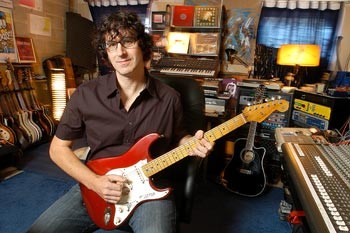Burnt Friedman & Jaki Liebezeit-Secret Rhythms 3
BURNT FRIEDMAN + JAKI LIEBEZIET – SECRET RHYTHMS 3 (NONPLACE)
RELEASE DATE: SEPTEMBER 26, 2008 THE NEW ALBUM AND EP FROM BURNT FRIEDMAN AND JAKI LIEBEZIET – SECRET RHYTHMS 3 (NONPLACE) FEATURING TIM MOTZER, HAYDEN CHISHOLM, AND JOSEPH SUCHY. NONPLACE.DE
Following a concert they gave together, Tim Motzer joined Friedman and Liebezeit in the studio and crucially influenced 3 album titles. Motzer already appeared on the predecessor CD (Secret Rhythms 2, non19) and also provided guitar accompaniment to Friedman’s contributions to the Nine Horses (with David Sylvian and Steve Jansen, samadhisound). Originating from the Philadelphia Jazz scene, the guitarist’s activities include a creative partnership with Ursula Rucker and King Britt. It is Motzer’s acoustic guitar that links up with the 2005 vinyl EP (Out In The Sticks, non17), on which Motzer likewise played an important role.
+++++++++++++

“It’s not important, but i like it if people dance to the music,” said Jaki Liebezeit in a recent interview. “Sometimes it happens.” The drummer is likely to get his wish with Secret Rhythms 3, his third collaboration with Cologne’s dub deconstructionist Burnt Friedman. The album, their most muscular so far, is a study in music as movement. Liebeziet’s drumming sets the pace on every song, and the duo’s collaborators – improvising guitarist Joseph Suchy, Philadelphia’s jazz- and soul-schooled guitarist Tim Motzer and Root 70 reedman Hayden Chisholm – fold themselves into the mix like tendons and sinews. Some of that is no doubt due to Friedman’s touch as a producer. The studio remains one of his principle instruments, and his mixing helps to smear disparate contributions into a blurry totality. But these seven songs also sound as live as anything Friedman has done, less the product of clever studio constructions than of a real-time mind meld. the album’s sheer physicality is helped by the fact that many of these rhythms do indeed seem to harbour secrets. Try as I might to count out the time signatures to “Morning has Broken’, I fail, and yet nothing sounds ‘difficult’ here. Their loping pulses may be riddled with kinks and strange switchbacks, but they keep coursing forward, carrying the listener with them. Although melody takes a third place to rhythm and timbre, riffs and pointillistic daubs of colour create an expressive sensibility that’s often lost in rigorously repetitive music. The album’s most bruising song, “Entsafter”, presents all the contradictions that makes the collective’s music so exciting, somehow managing to squeeze grinding, 5/4 guitar strumming into the rigid, 4/4 grid of rock and dance music. Over the course of eight minutes, scabby electric guitar riffs and and unflinching keyboard ostinato whip themselves into a frenzy, and it’s not difficult to imagine even a fairly conventional DJ using the track as the climax of a club set. That Friedman, Liebezeit and their colleagues are capable of sneaking their secret rhythms into even the most hidebound contexts only confirms the power of their beguiling approach to pulse.
Philip Sherburne The Wire (uk) October 200




 Next
Next